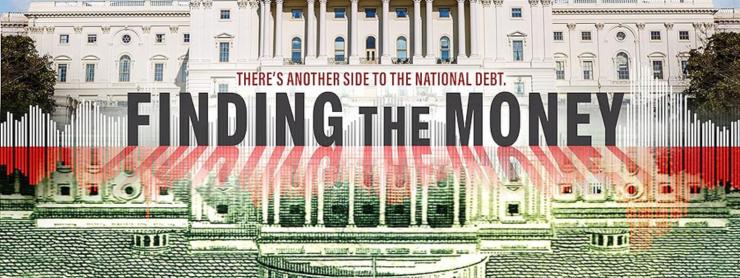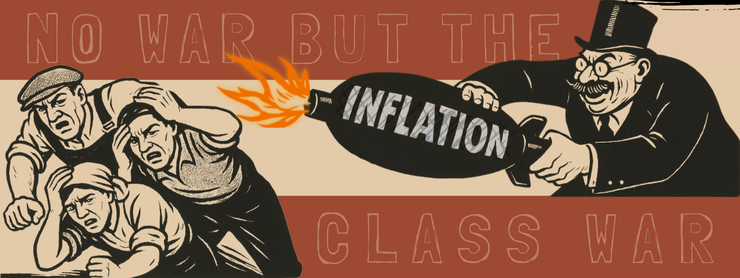The inflation hawks have a point: inflation is genuinely destabilizing. When working people’s purchasing power declines, they rightly worry that heating their homes, putting food on the table, or commuting to work will cause them to fall into debt, and, eventually, poverty.
But where the inflation hawks go wrong is in blaming “money printing” for inflation. It’s true that when demand exceeds supply, prices go up, but the nutrition, shelter and transport are not luxury goods whose prices are spiking because we gave ordinary people more money than they deserved.
It takes a certain kind of wilful blindness to focus exclusively on the role demand plays in inflation, without paying attention to supply. After all, the current inflationary run coincided with some extremely significant supply shocks: the removal of Russian oil and gas from global markets; the pandemic’s shattered supply chains, and blatant, illegal, coordinated price-gouging on the part of cartels and monopolies.
Focusing on the too much money side of the inflation equation ignores the too little capacity side. Those brittle supply chains that were shattered by the pandemic? They were a policy choice, not an historical inevitability: the world’s rich countries decided to dismantle their manufacturing and send it overseas in search of cheap labor and weak regulation.
The poor world was also screwed by policy choices: Institutions like the IMF insisted that former colonies orient their production around export goods rather than self sufficiency.
The monopolies that are using the polycrisis as a pretense to hike prices? They weren’t accidents — they were deliberately created under an ideology that insisted that monopolies are efficient and competition is for losers.
Our historical touchstones for hyperinflation are likewise crises of capacity. Weimar Germany, the poster-child for inflation, is a perfect example. The decision to impose reparations on Germany beyond its ability to pay doomed Germans to a spiral of decreasing capacity. Prices went up in Germany because there wasn’t enough stuff to go around — not because they printed too much money. Indeed, Weimar’s money-printing happened after the prices went up, because there wasn’t enough money to meet the skyrocketing prices.
(Fun fact: Weimar hyperinflation can be blamed on an accident of history. During the negotiations for the Treaty of Versailles, US President Woodrow Wilson was sidelined by the 1918 flu pandemic. Wilson had been adamant that Germany’s reparations should be balanced against its ability to recover and remain politically stable, lest it slide into military belligerence again. With Wilson in his sickbed and out of the picture, other world leaders were free to impose unattainable payments on Germany, which led, inevitably, to its political collapse and the rise of fascism.)
Capacity creation is key to fighting inflation. The reality is that when there’s not enough to go around, prices will go up. And while we can (and have) created capacity by conquering distant lands, or by miring them in debt, or by capitalizing on their desperation, that’s a very brittle kind of capacity.
Far more robust is the capacity that comes from investing in domestic capability: infrastructure, education, manufacturing, research, conservation and environmental remediation and care. These are not goods that the private sector willing produces. Given the choice between inventing a new life-saving drug and re-patenting an existing drug and then jacking up prices, the pharma industry inevitably chooses the latter. The policy choice to unshackle American business from the duty to make things created a wave of financialization that saw the country’s most productive businesses dismantled and converted into exotic financial instruments whose only productive output was bubbles and financial crises.
Those once-productive businesses owe their existence to the public sector. Public sector investment in capacity building gave us the tech industry, pharma, and the sustainable energy sector (and more).
When public investment is successful, the economy grows. When the economy grows, there are more goods and services for sale. When that happens, you need more money — otherwise money becomes deflationary, with the same dollar buying more over time, which means that people hoard their money rather than spending it, and economic growth is halted.
Seen this way, money can be viewed as just another commodity, one whose supply has to change based on the demand. But there’s a long tradition of suspicion of money creation (and its unfairly maligned sibling, money-annihilation, which is what happens when governments tax back the money they spent into the economy).
The “sound money” crowd argue that for money to be a medium of exchange and a store of value, its supply must be fixed and not fluctuate based on the need to increase capacity.
They argue that money is like a yardstick, and say that increasing the monetary supply when the economy grows is like making the inches farther apart when you want to measure something bigger.
That’s a deeply flawed analogy. Holding the money supply constant irrespective of the demand for money is like declaring the hottest weather as 100° F, and then, when it the temperature climbs to 115°, making that equal to 100° and recalibrating all your previous measurements.
It’s like declaring your waistline to be 32″, and then, when you gain weight, redefining 32″ as whatever your waistline happens to be.
More important than the flaws in the “we don’t change the units when the thing we measure changes” analogy is how a fixed money-supply works in the real world.
Because the demand for money rises and falls based on what’s going on in the real economy, a fixed-supply currency inevitably slides into chaotic volatility, as does the price of any good whose supply is fixed and whose demand varies.
Thus fixed-supply currencies aren’t just unreliable units of account — their volatility makes they poor stores of value, too. Using volatile assets to store value is a dangerous business: when the value of an asset slips, it can trigger cascading liquidations, as the loans that are backed by that asset find themselves undercollateralized. This is worsened by contracts that trigger automatic liquidations when the value of collateral drops — there’s a reason these contracts are called “suicide pacts.”
Cory Doctorow (craphound.com) is a science fiction author, activist, and blogger. He has a podcast, a newsletter, a Twitter feed, a Mastodon feed, and a Tumblr feed. He was born in Canada, became a British citizen and now lives in Burbank, California. His latest nonfiction book is How to Destroy Surveillance Capitalism. His latest novel for adults is Attack Surface. His latest short story collection is Radicalized. His latest picture book is Poesy the Monster Slayer. His latest YA novel is Pirate Cinema. His latest graphic novel is In Real Life. His forthcoming books include The Shakedown (with Rebecca Giblin), a book about artistic labor market and excessive buyer power; Red Team Blues, a noir thriller about cryptocurrency, corruption and money-laundering (Tor, 2023); and The Lost Cause, a utopian post-GND novel about truth and reconciliation with white nationalist militias (Tor, 2023).
Originally published 9-11-22 on the author’s Medium blog.






2 thoughts on “Sound Money”